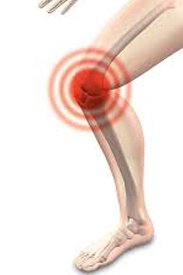 For both dancers and dance teachers, knees are one of the most well-used parts of the body, and are usually the parts to wear out quickest, along with hips. Knee problems are common but that is not to trivialise knee pain or niggles in any way.
For both dancers and dance teachers, knees are one of the most well-used parts of the body, and are usually the parts to wear out quickest, along with hips. Knee problems are common but that is not to trivialise knee pain or niggles in any way.
If your knees hurt when you land from a jump, go downstairs, do grand pliés, or sit with them bent for long periods of time you could be suffering from Jumper’s Knee. This condition refers to strain of the patellar tendon that runs from the lower part of the kneecap to the upper part of the shin. The pain usually comes from a point in the attachment of the tendon to the tip of the patella and not from the knee joint itself.
Most of the time it is an ongoing condition that progressively gets worse. Diagnosis can be confirmed by injecting local anesthetic into the sore spot, to see if it relieves the pain. The condition occurs from tightness of the quads, and weakness when the muscle lengthens as you plié. The condition is usually due to one part of the tendon that has pulled loose from the patella and has not healed.
Osgood-Schlatter’s Disease is the juvenile version of Jumper’s Knee. It is a condition often seen in young (mostly male) dancers where they strain the attachment of the patellar tendon to the upper tibia. It forms a swollen, tender lump below the knee and is related to running and jumping; it comes and goes but disappears fully when growth is over.
Teenage dancers, in particular those who are hypermobile, may suffer from subluxation, where the knee goes out and back in, or even dislocation where it goes all the way out and does not return. This specific patella pain is also frequent in those dancers who turn out from the knee rather than the hip. This is an all too frequent case and highlights the dangers of incorrect alignment and poor technique.
